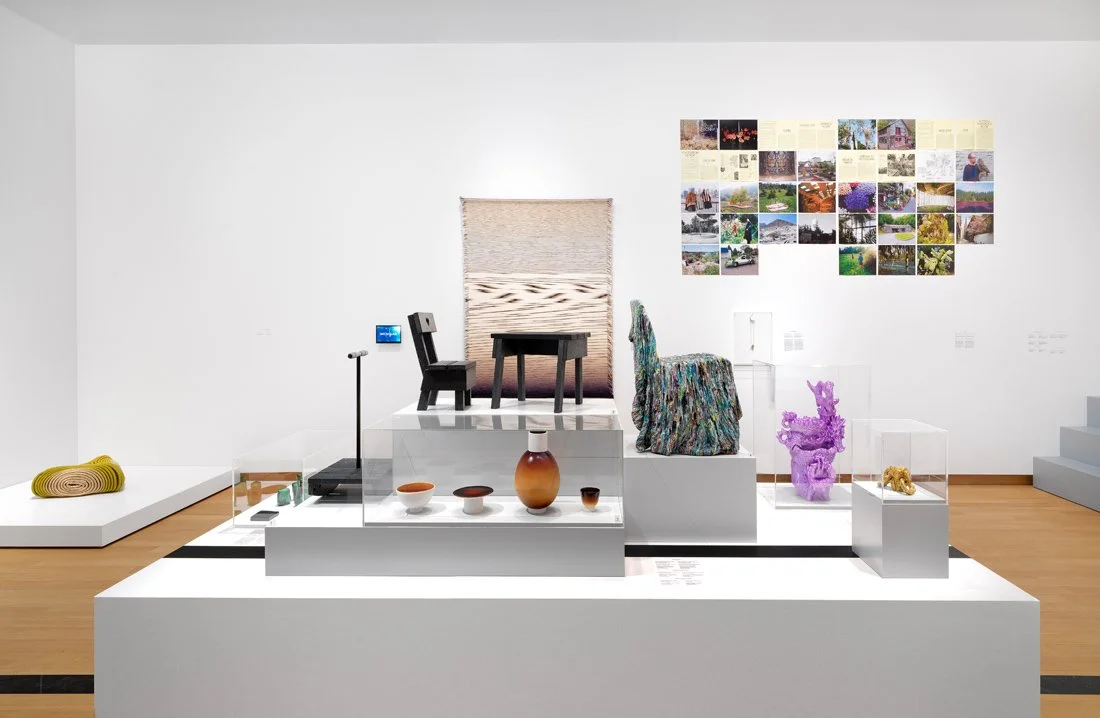STEDELIJK MUSEUM EXPANDS COLLECTION DISPLAY WITH 99 CONTEMPORARY WORKS
The Stedelijk Museum is refreshing its collection display Tomorrow Is a Different Day with 99 newly added works, many by women and emerging international artists. Three-quarters of the visual art now on show is made by female creators, and for many of these acquisitions, it’s the first time they’re going on public view. The presentation highlights how art since 1980 has grappled with globalisation, inequality, and environmental crisis, while also celebrating new approaches to identity and cultural exchange.
featured image, left to right: work by NATASJA KENSMIL, MARTINE SYMS, JULIE MEHRETU, and NAIRY BAGHRAMIAN
left to right: work by MIRIAM CAHN, RACHEL HARRISON, and YANG SHAOBIN
photography GERT JAN VAN ROOIJ
One gallery is devoted to Power, confronting the symbols and abuses of authority. Natasja Kensmil imagines the last Russian tsars in a ghostly afterlife, Miriam Cahn distils power into the violent image of a boot pressing a face, while Luc Tuymans softens royal portraiture with a more human rendering of Queen Beatrix.
left to right: work by ANTHONY CUDAHY, LYDIA OURAHMANE, CARRIE MAE WEEMS, and XAVIER ROBLES DE MEDINA
photography STEDELIJK MUSEUM AMSTERDAM
Themes of belonging and cultural navigation come to the fore in In-Betweenness. Lydia Ourahmane’s installation of a door from her Algiers home speaks to displacement, while Marcos Kueh’s woven posters and Benjamin Li’s food-centred practice reflect on national identity and community. Works by Remy Jungerman, Xavier Robles de Medina, and Iris Kensmil expand on how culture, history, and personal narrative intertwine.
left to right: work by SANDRA MUJINGA, and PAUL MPAGI SEPUYA
photography GERT JAN VAN ROOIJ
The Black Gaze confronts how Black representation in Western art has long been shaped by stereotypes. In this new display, Black artists reclaim that narrative on their own terms. Paul Mpagi Sepuya reframes intimacy through mirrors and fragments, Tschabalala Self’s vibrant figures assert complexity and presence, and Sandra Mujinga cloaks her subjects in shadow and sound to balance visibility with protection. Ellen Gallagher’s Negroes Battling in a Cave responds to the racist inscription beneath Malevich’s Black Square, turning erasure into confrontation.
left to right: work by NAN GOLDIN, and PETER HUJAR, wallpaper by GENERAL IDEA
photography GERT JAN VAN ROOIJ
Protest emerges across the collection, with works that channel political urgency into visual form. Carrie Mae Weems captures the erasure of Black Lives Matter slogans, Julie Mehretu and Nairy Baghramian respond to images of the Ukraine war and the Capitol riots, and Kudzanai-Violet Hwami reflects on the alienation of online life post-pandemic. Nan Goldin’s Memory Lost indicts the opioid crisis, while photographs from her Cookie Portfolio appear alongside works by General Idea and Peter Hujar, all confronting the devastation and stigma of the AIDS epidemic.
left to right: work by JOANA SCHNEIDER, INEKE HANS, BELÉN, and BÄR+KNELL DESIGN
photography GERT JAN VAN ROOIJ
Upcycling turns attention to the climate crisis, as designers find new life in discarded materials. Ineke Hans transforms waste into furniture, Joana Schneider braids rope and fishing nets into objects, and Tamara Orjola spins pine needles into textiles. From Bär+Knell’s recycled plastic chairs to Belén’s plant-dyed blankets, these works prove that ecological urgency can fuel design ingenuity without sacrificing beauty.
This expansion of the Stedelijk’s holdings has been driven not just by acquisitions but also by significant gifts. Donors and institutions including the VriendenLoterij, Mondriaan Fund, and Rembrandt Society have helped bring works by Marlene Dumas, Rashid Johnson, Christina Quarles, and others into the museum’s collection.
Collectively, these additions underscore the Stedelijk’s commitment to presenting art that speaks to contemporary dilemmas and lived realities. By foregrounding female perspectives, diasporic voices, and sustainable design, the museum continues to question power, identity, and the future — proving that tomorrow really can be a different day.





